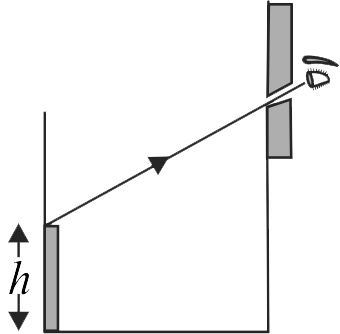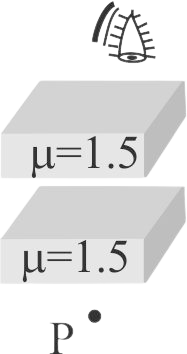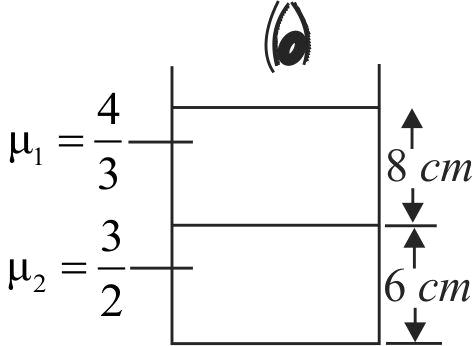364918
A rod of height \(h\) is placed in a beaker of same radius. The height of the beaker is thrice its radius. An observer sees the top end of the rod through a pin-hole (see figure). When the beaker is filled with a liquid \(\left( {R.I. = \sqrt \mu } \right)\) upto a height 2h, he can see the lower end of the rod. Find the value of \(\mu \).
364918
A rod of height \(h\) is placed in a beaker of same radius. The height of the beaker is thrice its radius. An observer sees the top end of the rod through a pin-hole (see figure). When the beaker is filled with a liquid \(\left( {R.I. = \sqrt \mu } \right)\) upto a height 2h, he can see the lower end of the rod. Find the value of \(\mu \).
364918
A rod of height \(h\) is placed in a beaker of same radius. The height of the beaker is thrice its radius. An observer sees the top end of the rod through a pin-hole (see figure). When the beaker is filled with a liquid \(\left( {R.I. = \sqrt \mu } \right)\) upto a height 2h, he can see the lower end of the rod. Find the value of \(\mu \).
364918
A rod of height \(h\) is placed in a beaker of same radius. The height of the beaker is thrice its radius. An observer sees the top end of the rod through a pin-hole (see figure). When the beaker is filled with a liquid \(\left( {R.I. = \sqrt \mu } \right)\) upto a height 2h, he can see the lower end of the rod. Find the value of \(\mu \).



